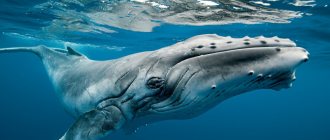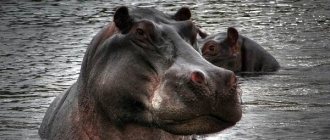“Sea inhabitants endowed with intelligence” - that’s what they are called throughout the world. Good-natured inhabitants of the oceans and seas, who, like people, can talk, hunt in groups and help each other, they are the smartest animals on the planet. As you may have guessed, we will talk about dolphins.
These incredibly smart and charming mammals are familiar to everyone since childhood - legends are made about them, songs are written and films are made. And for good reason, because the intelligence of dolphins is often equated to that of humans, and that is why they are so easy to get along with. In our selection, we will try to bypass the pile of scientific facts and intricate terms, and will try to show the multifaceted beauty of these marvelous animals.
bottlenose dolphins
Black Sea dolphins are the most important photo models for posters decorating dolphinariums around the world. A long silver face, with a sly smile on a toothy beak - this is the image to which both adults and children are accustomed. Few people know that bottlenose dolphins live in almost all the oceans of the world and are one of the most active “rescuers of people.” These animals, from 2 to 4.5 meters long, can reach speeds of up to 42 kilometers per hour, sometimes jumping above the water surface to a height of about 5 meters. Thanks to their special brownish-grayish color and sometimes barely noticeable spotted linear pattern on their sides, these bottlenose dolphins are one of the most attractive representatives of the dolphin genus.
Official recognition
The Indian government recently removed dolphins from the list of animals and gave them the status of "non-human persons." Thus, India became the first country to recognize the intelligence and self-awareness of dolphins. In this regard, the Indian Ministry of Environment and Forests has banned any performances using dolphins and called for their special rights to be respected.
Killer whales
The bright black and white color and predatory nature distinguish this marine mammal from the dolphin family. Being the only representative of the killer whale genus and rightfully sitting at the top of the marine food chain, it amazes with its size, reaching a length of up to 10 meters.
Natural hunters are also big eaters, and when food is scarce they become quite aggressive. This dolphin has strong spike teeth, sharp fins and a powerful tail, which makes its beauty frightening. However, we emphasize that these formidable dolphins, together with the good-natured bottlenose dolphins, are the only representatives of their family capable of recognizing themselves in the mirror.
Way of life
Dolphins live in schools and do not tolerate loneliness very well. Although they do not have a leader, they carry out all actions in coordination: they hunt together, raise children, have fun, performing amazingly beautiful jumps one after another.
The dolphin is considered one of the most intelligent mammals on our planet: the weight of its brain is 1700 grams, which is three hundred grams more than a human, and the convolutions in the cerebral cortex are also twice as large. This explains their highly developed social consciousness, ability to sympathize, readiness to help sick and wounded relatives, as well as drowning people.
Dolphins help quite actively: if one of the members of the pod is injured or barely stays afloat, they support him near the surface so that he cannot drown and choke. They do the same in relation to a person, also helping to get to the shore. Some scientists explain why dolphins do this by caring for the population: each individual in the pod is valuable - and everything must be done to save its life.
Language
To communicate, animals use gestures (turns, jumps, various swimming styles, head, fins, tail), as well as voice: the sounds of dolphins are about 14 thousand signals, and everyone has heard about the songs of dolphins. These unique animals are capable of perceiving vibration frequencies of up to 200 thousand per second, while the human ear is up to 20 thousand.
They are also four times more capable of analyzing dolphin sounds by separating frequencies from each other (a lot of research has been done lately to find out why dolphins have these abilities). Communication occurs mainly with the help of ultrasound (it is especially convenient for them to use it to transmit sound over vast distances).
Dolphin songs are not only ultrasound: the sounds of dolphins often sound at a medium frequency and are expressed by clicks, creaks, and whistles (studies have shown that they perceive their speech as hieroglyphic pictures).
There are two types of dolphin sounds:
- Sonar or echolocation - animals hear the echo of a beating sound and identify it;
- Whistling or chirping - these sounds of dolphins are used for close communication with relatives and the animals express their emotions with them. Scientists have counted about 186 different types of “whistles”, which, like human speech, contain sounds, syllables, words, phrases, paragraphs, context and dialect.
Nutrition
Dolphins' diet is based on fish, squid, and shrimp (some dolphins in the ocean are quite capable of diving to a depth of 260 kilometers to catch their favorite prey); killer whales eat marine mammals and birds.
They catch fish in different ways. Sometimes the whole school of dolphins searches for her, sometimes in a separate group or they send a scout to look for her.
If the hunt takes place in the open sea, dolphins surround a large school of fish, crowding them into a heap, after which they take turns diving there and feeding. If they are fishing near the shore, the strategy is somewhat different: a school of dolphins drives the schools towards land, after which the fish are easily caught in shallow water.
Reproduction
The ability to reproduce in females appears between the fifth and twelfth years of life, in males - between the ninth and thirteenth. Their pairs are unstable and the animals change partners every time.
Exactly how long pregnancy lasts has not been established; the period is estimated to range from ten to eighteen months. When giving birth, the female is very close to the surface so that, as soon as the baby is born, she raises her tail high, giving him the opportunity to take a breath of air before falling into the water.
Usually one baby is born, about half a meter long, and until six months the mother feeds it with milk and protects it. Newborn babies usually do not fall asleep during the first month of their life and do not allow their mothers to sleep, swimming around them and surfacing every thirty seconds, forcing them to be constantly on alert.
Koalas are the original representatives of the living world of Australia133494.811
Common dolphins
Based on the name of this dolphin, its sides are painted white, setting off the blue-black or black-brown color of its body. The common dolphin, as it is popularly called, is the most common species, and rather than listing its habitats, it is easier to name those where they do not exist. These animals are freedom-loving, so they are not found in dolphinariums. In the sea, they can be recognized not only by their white sides, but also by their slightly flattened and elongated muzzle, similar to a beak.
Regeneration ability
Dolphins have an incredible ability to heal themselves. If they receive any kind of wound - even a large one - they do not bleed or die from infection, as one might assume. Instead, their flesh begins to regenerate at a rapid rate, so that after just a few weeks, a deep wound, such as from a shark's teeth, will have almost no visible scars. Interestingly, the behavior of injured animals is practically no different from normal. This gives reason to believe that the nervous system of dolphins is capable of blocking pain in critical situations.
Gray dolphins
The rather discreet name of this species does not deprive it of its beauty, but only leads to bewilderment and amazement after what it sees. A powerful body covered with spots, stripes and scratches, an unusual shape of the muzzle, a unique concave groove running along the axis of the entire body - all this gives the animal a fascinating appearance. Due to their good-natured nature, dolphins of this species communicate with all their relatives, although they often end up with a lot of scars during games. However, as you know, scars adorn males, so their beauty is unquestioned.
Cross dolphins
Another representative of the black and white color, the combination of which on the belly and back represents a “Maltese cross”. An interesting fact is that depending on the angle from which this dolphin is viewed, its color can transform into a pattern called an “hourglass”, thus presenting a unique spectacle to the viewer. Another feature of this species is that dolphins simply love to “wave ride”, often changing their route to ride on the crests of waves left by passing ships.
Bottom line
Interesting facts about these wonderful and intelligent creatures are updated with new information every year. In conclusion, we note that dolphins during evolution have developed their own signaling system. Babies receive their own name at birth. They respond to this signal throughout their lives. Another ability of amazing sea creatures is recognizing themselves in the mirror.
Tell us in the comments which beautiful species of dolphins you like the most. We will also be very glad to hear your stories related to dolphins.
Motley dolphins
Dolphins living in the southern hemisphere were named after Philibert Commerson, who first described this species. Their peculiarity lies in their rather “alive” behavior, relative to their relatives, and their incredible “up and down” swimming tactics, which allows them to better search for prey. Their color is not so rare - white and black - what is unique is its distribution and clarity of boundaries: the head and chest are black, the throat and body are white, and the tail is again black. These dolphins (males) are also distinguished by a special black spot on their belly, reminiscent of a tear.
Behavior in nature
Squirrels are very friendly animals in one flock. They take good care of their sick brethren, hunt fish together, and protect and protect young dolphins. Communication in the flock occurs using sound signals - clicks, squeaks and rattles. Unlike the bottlenose dolphin, the white sided dolphin uses 5 sounds of different frequencies, tonality and timbre.
In winter, dolphins gather in large schools, reaching several thousand individuals. By summer they usually break up, and white drums form small groups. In such families there is a very close connection between all its members.
Cases have been recorded of these dolphins helping old animals float on the surface of the water so they could breathe.
Irrawaddy dolphins
Sacred animals of Laos and Cambodia, so carefully protected in Asian countries, dolphins are among the most rapidly dying out. They lack a beak, therefore they are unique and original in their beauty. Their dorsal fin is also special - it is located very close to the tail, which gives the dolphin extraordinary maneuverability. These animals often accompany fishermen and help in driving fish. They are extremely friendly and sociable,
Cetaceans / Lissodelphis
There are 2 types. One is found in the southern seas, the second in northern latitudes. They grow up to 2.5 m in length. Their beak is very thin and there is no dorsal fin.
On the sides there are two sickle-shaped fins. The narrow shape of the muzzle and lateral fins allow them to develop great speed and dive deeply in search of food.
They feed on small fish, crustaceans, and mollusks. The northern species can be found in the Far Eastern seas off the coast of Russia.
Grinds
Another species of dolphin, slightly different from the appearance we are used to. These long-finned mammals have a forward-set dorsal fin and a large pad of fat on the forehead, giving the head a spherical shape. It would seem that the appearance is funny and one should speak with caution about beauty, however, the grace and spindle-like shape of the long body take their toll - the dolphin becomes one of the main attractions of the world aquarium.
Malaysian dolphins
Dolphins with the most numerous variations of names are also distinguished by their size, reaching no more than 2.5 meters. Called Sarawak, short-beaked or Fraser's dolphins, these animals captivate with their color - against the background of a gray body there is often a black stripe, called a “bandit mask”.
How are they born?
Do you know how dolphins are born? The bottlenose dolphin carries the baby for about a year. It is born tail first. The cub's eyes are immediately open, and its senses are extremely developed. Moreover, a barely born dolphin already has sufficient coordination to follow in the footsteps of its mother, who helps to rise to the surface. Then comes the baby dolphin's first breath in his life. Such a trusting relationship between a child dolphin and its mother lasts approximately from 3 to 8 years.
Large-toothed dolphins
These dolphins, not distinguished by their slenderness and grace, are the only ones of their kind, and therefore are valuable for world science. First described in 1823 by Georges Cuvier, this species, due to its narrow snout, was given the name "Steno bredanensis", which means "narrow". Another distinctive feature of these dolphins is that there are dark rings around the eyes, and the whole body is covered with white spots - often shark bites, thanks to which these dolphins acquire, albeit sad, but unusual beauty.
Description
The length of dolphins ranges from one and a half to ten meters. The smallest dolphin in the world is Maui, which lives near New Zealand: the length of the female does not exceed 1.7 meters. The white-faced dolphin, about three meters long, is considered a large inhabitant of the deep sea. The largest representative is the killer whale: males reach ten meters in length.
It is worth noting that males are usually ten to twenty centimeters longer than females (the exception is killer whale dolphins - here the difference is about two meters). They weigh on average from one hundred fifty to three hundred kilograms, the killer whale weighs about a ton.
The backs of sea dolphins can be gray, blue, dark brown, black and even pink (albinos). The front part of the head can be either plain or white (for example, the white-faced dolphin has a white beak and the front part of its forehead).
In some species, the front mouth is rounded and there is no beak-shaped mouth. In others, small ones, the head ends in an elongated mouth in the shape of a flattened “beak”, and the mouth is shaped in such a way that it seems to people watching them that they are always smiling, and therefore they often have an irresistible desire to swim with dolphins. At the same time, the impression is not spoiled even by the huge number of teeth of the same cone shape - dolphins have about two hundred of them.
Thanks to their elongated body and smooth, elastic skin, these animals hardly feel the resistance of the water while moving. Thanks to this, they are able to move very quickly (the average speed of a dolphin is 40 km/h), dive to a depth of about one hundred meters, jump out of the water nine meters in height and five in length.
Another unique feature of these marine mammals is that almost all species of dolphins (with the exception of the Amazon river dolphin and several other species) have good vision both underwater and above the surface. They have this ability due to the structure of the retina, one part of which is responsible for the image in the water, the other - above its surface.
Since whales and dolphins are relatives, like all representatives of cetaceans, they are quite capable of staying under water for a long period. But they still need oxygen, so they constantly float to the surface, showing their blue muzzle and replenishing air reserves through the blowhole, which closes under water. Even during sleep, the animal is fifty centimeters from the surface and, without waking up, swims out every half a minute.
White-faced dolphins
The inquisitive marine inhabitant is quite common in Russia and lives preferably in the coastal zone. Its color is easy to guess, since the name speaks for itself. The peculiarity of these dolphins is not only their appearance, but also their amazing vocal range, which includes not only screams, clicks and whistles, but also other types of vocalizations, thanks to which dolphins communicate with all representatives of the cetacean order.
Let's get to know each other better
Dolphins - mammals whose native element is the World Ocean - belong to the order of cetaceans. In total, scientists have counted 50 species of these animals.
Their distribution area covers the entire Earth, with the exception of the Arctic and subarctic zone. They mainly inhabit seas and oceans, but there are also freshwater dolphins - a rare species of La Plata, Amazonian, Chinese river.
Next, we will get acquainted with the description, structural features of this amazing animal, and find out how and how long dolphins live.
White-bellied dolphins
These dolphins live only off the coast of Chile, so only a small number of people can see their rare beauty. Until recently, fairly small dolphins with selective (judging by their name) colors were called “black”, but scientists considered this name to be insufficiently reliable, with which we cannot but agree.
Amazon Sotalia / Sotalia fluviatilis
By the species name you can understand that these dolphins are found in the Amazon basin, as well as off the coast of Latin America. Locals call them “tukushi”. This is what the tribes of the Tupi language group called them, and it became entrenched in colloquial speech.
Outwardly, they resemble bottlenose dolphins, but tukushi are slightly smaller. Adults do not grow more than 150 cm. They have a pinkish abdomen, and the back and sides are usually bluish-gray in color. They live in groups of 10–15 individuals.
Scientists distinguish between river and sea subspecies. A white dolphin is depicted on the coat of arms of the largest city in Brazil, Rio de Janeiro.
8
Pygmy killer whale
Quite rare and little-studied dolphins are distinguished by their changeable character: in captivity they are harsh and obstinate, in freedom they are sociable and friendly. Their beauty lies in their special – deep black color with light gray sides. Also called “black” or “Fareza”, this dolphin does not show active acrobatic skills, and only occasionally appears above the water.
Relationships with people
Dolphins are very caring creatures, always ready to help, not only their relatives, but also people, if they find themselves in the right place and at the right time. These cetaceans, thanks to their excellent hearing, are able to hear a human cry for help from afar.
Dolphins are very peaceful towards people and are easy to train by humans. They themselves take the initiative to communicate, swim up and play with enthusiasm. Someone even notices a smile on these wonderful creatures.
Spending time with dolphins, many people notice a significant improvement in their well-being. Indeed, dolphin therapy is used to cure any neurological or mental diseases in a person, if any, and also simply helps relieve stress or headaches.
Note!
- Removal and cremation of animals
Cynologists - who are they?
Car soundproofing. What is she like?
Some countries, such as Costa Rica, Hungary and India, have banned dolphinariums because they have great respect for these animals and consider it inhumane to keep them in captivity.











